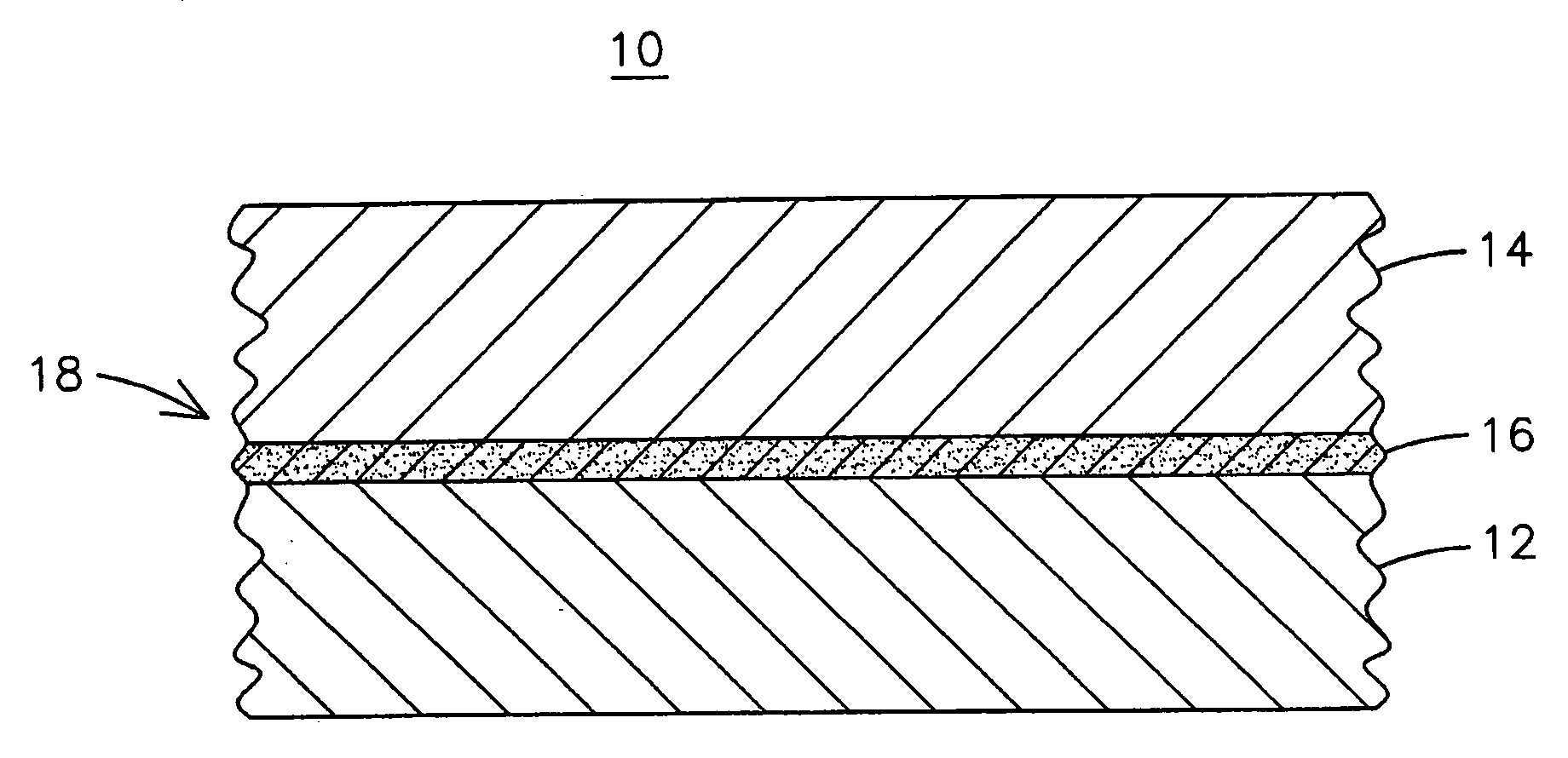Boron free joint for superalloy component
a superalloy and joint technology, applied in the field of metalurgical field, can solve the problems of complex fusion welding process, difficult control of superalloy materials, and various types of damage and deterioration of components
- Summary
- Abstract
- Description
- Claims
- Application Information
AI Technical Summary
Problems solved by technology
Method used
Image
Examples
Embodiment Construction
[0008] The melting temperatures of various nickel-aluminum alloy compounds are known in the art. It is known that the compounds containing about 60-80 wt. % aluminum (40-20 wt. % nickel) have a melting temperature of about 1,000-800° C. The present inventor has noted the significance of the fact that such melting temperatures are significantly below the melting temperature of a typical nickel-based superalloy, which may be about 1,500° C. The present inventor has innovatively applied such materials in one embodiment of the present invention for joining of nickel-based superalloy components.
[0009] The FIGURE illustrates a component 10 of a gas turbine engine having a first superalloy substrate material 12 being joined to a second superalloy substrate material 14 by a brazing alloy 16 to form a joint 18. The superalloy substrates 12, 14 may be any nickel-based or cobalt-based superalloy material known in the art. The major elemental constituents in a superalloy material may include n...
PUM
| Property | Measurement | Unit |
|---|---|---|
| weight percent | aaaaa | aaaaa |
| weight percent | aaaaa | aaaaa |
| melting temperature | aaaaa | aaaaa |
Abstract
Description
Claims
Application Information
 Login to View More
Login to View More - R&D
- Intellectual Property
- Life Sciences
- Materials
- Tech Scout
- Unparalleled Data Quality
- Higher Quality Content
- 60% Fewer Hallucinations
Browse by: Latest US Patents, China's latest patents, Technical Efficacy Thesaurus, Application Domain, Technology Topic, Popular Technical Reports.
© 2025 PatSnap. All rights reserved.Legal|Privacy policy|Modern Slavery Act Transparency Statement|Sitemap|About US| Contact US: help@patsnap.com


